#Healthcare Transportation Services analysis
Explore tagged Tumblr posts
Text
United States voice biometrics market size is projected to exhibit a growth rate (CAGR) of 16.85% during 2024-2032. The increasing focus on security and the need for robust authentication methods, the rising demand in financial services, the rapid technological advancements in artificial intelligence (AI) and machine learning (ML), and the shift towards multi-factor authentication (MFA) are some of the factors propelling the market.
#United States Voice Biometrics Market Report by Component (Solutions#Services)#Type (Active Voice Biometrics#Passive Voice Biometrics)#Deployment Mode (On-Premises#Cloud-Based)#Organization Size (Large Enterprises#Small and Medium-sized Enterprises (SMEs))#Application (Authentication and Customer Verification#Forensic Voice Analysis and Criminal Investigation#Fraud Detection and Prevention#Risk and Emergency Management#Transaction Processing#Access Control#Workforce Management#and Others)#Vertical (BFSI#Retail and E-Commerce#Government and Defense#IT and Telecom#Healthcare and Life Sciences#Transportation and Logistics#Travel and Hospitality#Energy and Utilities#and Region 2024-2032
1 note
·
View note
Text
How AI is Transforming Everyday Technology
Introduction
Welcome to TechtoIO! Today, we delve into one of the most exciting developments in modern technology: artificial intelligence (AI). AI has moved beyond the realm of science fiction and is now an integral part of our daily lives. From smart homes to personalized recommendations, AI is transforming everyday technology in ways we once only dreamed of. In this article, we explore how AI is reshaping various aspects of our lives and what we can expect in the near future. Read to continue
#Innovation Insights#TagsAI automated trading#AI content recommendations#AI customer service#AI energy management#AI entertainment industry#AI fraud detection#AI home security#AI in education 2024#AI in finance#AI in gaming#AI in healthcare 2024#AI in transportation#AI in VR and AR#AI predictive maintenance#AI traffic management#AI transforming technology#AI voice assistants#autonomous vehicles AI#personalized learning AI#smart home AI#Technology#Science#business tech#Adobe cloud#Trends#Nvidia Drive#Analysis#Tech news#Science updates
1 note
·
View note
Text
GIS In Our Daily Lives
The involvement of Geographic Information Systems (GIS) in our daily lives is pervasive, influencing and enhancing various aspects across different sectors. The integration of GIS into everyday activities has become integral for decision-making, planning, and optimizing resources. GIS helps city planners and transportation experts to provide them with information like maps, satellite pictures, population statistics, and infrastructure data. GIS helps them make better decisions when designing cities and transportation systems that are sustainable and good for the environment.
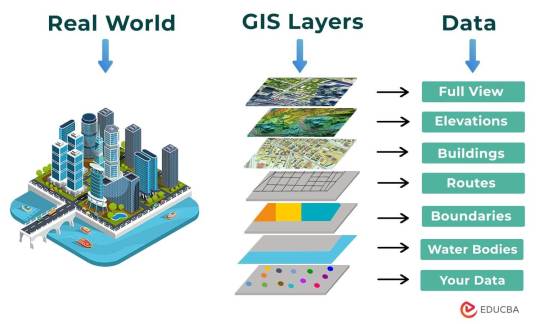
The following points elucidate the notable involvement of GIS in our daily lives:
Navigation and Location Services: GIS provides monitoring functions through the visual display of spatial data and precise geographical positioning of monitored vehicles, whereas GPS provides accurate, clear, and precise information on the position and navigation of a monitored or tracked vehicle in real-time and at the exact location.GIS is at the core of navigation applications and location-based services on smartphones. It enables accurate mapping, real-time navigation, and geolocation services, assisting individuals in finding locations, planning routes, and navigating unfamiliar areas.
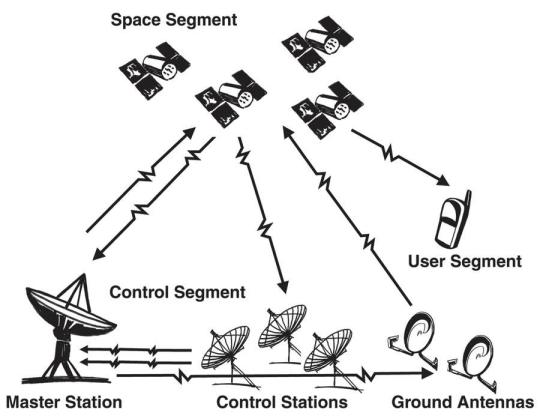
E-Commerce and Delivery Services: GIS software is a powerful tool for supply chain network planning. It helps determine the optimal location for distribution centers, warehouses, or other supply facilities. GIS is utilized in logistics and delivery services for optimizing routes, tracking shipments, and ensuring timely deliveries. E-commerce platforms leverage GIS to enhance the efficiency of their supply chain and last-mile delivery processes.
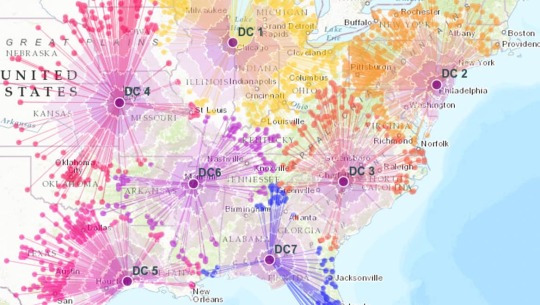
Weather Forecasting and Disaster Management: Many states are using GIS dashboard to monitor the rainfall across the state, on a real-time basis, from the data shared by rain sensors installed at various locationsGIS plays a crucial role in weather forecasting and disaster management. It assists meteorologists in analyzing spatial data, predicting weather patterns, and facilitating timely responses to natural disasters by mapping affected areas and coordinating emergency services.
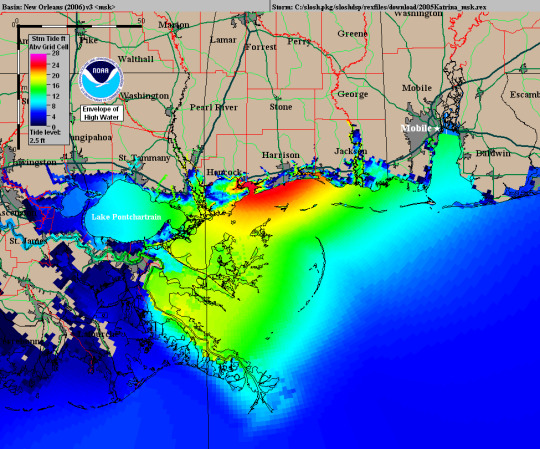
Healthcare Planning and Disease Monitoring: Geographic Information Systems enable the visualization and monitoring of infectious diseases. Additionally GIS records and displays the necessary information that health care needs of the community as well as the available resources and materials. GIS supports public health initiatives by mapping the spread of diseases, analyzing healthcare resource distribution, and assisting in the planning of vaccination campaigns. It aids in identifying high-risk areas and optimizing healthcare service delivery.

Social Media and Geo-tagging: GIS also helps in geotagging and other location related information in posts, it’s tools can map and visualize the spatial distribution of social media activity. This analysis can reveal trends, hotspots, and patterns in user engagement across different geographic areas. Many social media platforms incorporate GIS for geo-tagging, allowing users to share their location and experiences. This feature enhances social connectivity and facilitates the sharing of location-specific information.
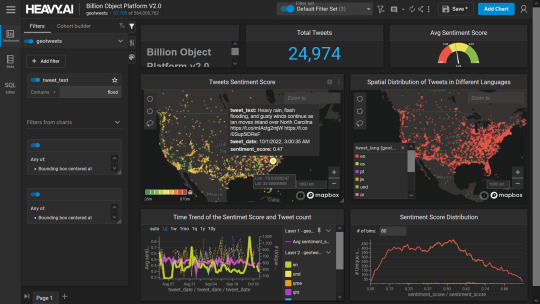
Smart City Initiatives: The Geographic Information System (GIS) offers advanced and user-friendly capabilities for Smart City projects and allows to capture, store and manipulate, analyze and visualize spatially referenced data. It is used for spatial analysis and modeling. It is the cornerstone of smart city planning, enabling the integration of data for efficient urban management. It supports initiatives related to traffic management, waste disposal, energy consumption, and overall infrastructure development.
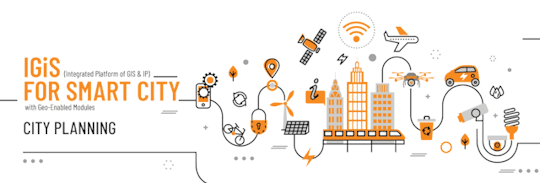
Education and Research: GIS is increasingly utilized in education and research for visualizing and analyzing spatial data. It enables students and researchers to explore geographic relationships, conduct field studies, and enhance their understanding of various subjects.

Agricultural Management and Precision Farming: Farmers leverage GIS to optimize agricultural practices by analyzing soil conditions, crop health, and weather patterns. Precision farming techniques, facilitated by GIS, contribute to increased crop yields and sustainable farming practices.

Real Estate and Property Management: In the real estate sector, GIS aids in property mapping, land valuation, and site selection. It provides real estate professionals with valuable insights into spatial relationships, market trends, and optimal development opportunities.
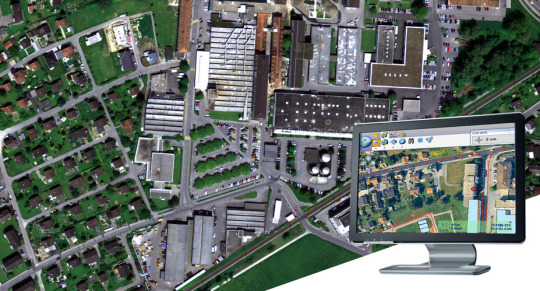
Tourism and Recreation: GIS enhances the tourism industry by providing interactive maps, route planning, and location-based information. It assists tourists in exploring destinations, finding attractions, and navigating efficiently.

The broad and varied involvement of GIS in our daily lives underscores its significance as a technology that not only facilitates geographic data analysis but also contributes to the efficiency, safety, and interconnectedness of modern society. As GIS applications continue to evolve, their impact on daily activities is expected to further expand and refine.
#gis#architectdesign#architecture#city#education#geographic information system(gis)#geographical indication
13 notes
·
View notes
Text

Thank you for choosing United Healthcare for your healthcare needs. After a careful review of the claim submitted for emergency services on December 4, 2024, we regret to inform you that your request for coverage has been denied.
Our denial is based on the following findings:
Lack of Prior Authorization:
Our records indicate that you failed to obtain prior authorization before seeking care for the gunshot wound to your chest. While we acknowledge the emergent nature of the situation, our policy requires that all non-preventative services, including “unexpected chest injuries,” be pre-approved through our 24/7 Prior Authorization Hotline. Unfortunately, our hotline received no such call during your ambulance transport or at any point before your admission to the emergency room.
2. Failure to Prove Medical Necessity:
The submitted documentation does not sufficiently demonstrate that treatment for a penetrating chest wound meets the definition of “medically necessary.” Our guidelines specify that life-threatening conditions must be substantiated with a second opinion from a network provider, preferably before care is rendered.
3. Alternative Options Not Explored:
Based on our retrospective analysis, alternative, more cost-effective treatment options—such as a virtual telehealth consult or at-home first aid—were not attempted prior to your emergency room visit. We understand that you were actively “bleeding out,” but this does not exempt you from exploring lower-cost care pathways.
4. Out-of-Network Care:
The emergency room where you received treatment is not within our network. While City General is geographically closer to the location of your shooting, our network partner, DiscountCare Clinic, is only 25 miles away and equipped with staplers and gauze for such injuries.
Next Steps: You may file an appeal within 30 days if you believe this decision is incorrect. Appeals must include:
A notarized letter from the attending physician, explaining why you thought you were entitled to not bleed to death while waiting for approval.
Evidence that your injuries were, in fact, serious enough to merit immediate attention, such as photos, videos, or live reenactments.
We encourage you to familiarize yourself with your plan benefits and utilize in-network providers for future incidents. Please do not hesitate to reach out to our customer support team if you have questions about this
Sincerely and in good health, United Healthcare
P.S. Remember: Preventative care is the best care! If you’d like, we can help you schedule your annual physical or connect you to a mindfulness seminar to prevent future traumatic injuries.

Thank you for your recent appeal regarding the denial of coverage for your emergency room visit on December 5, 2024. We have carefully reviewed the additional information you provided, including the attending physician’s notes, photographic evidence of your gunshot wound, and the security footage of the event.
After a thorough re-evaluation of your case, we regret to inform you that the original denial decision has been upheld. Our reasons for this decision are outlined below:
Insufficient Documentation Supporting Medical Necessity:
While we acknowledge the physician’s statement that your “life was in immediate danger,” we remain unconvinced that the treatment you received in the emergency room was the only appropriate course of action. Specifically, we find the decision to intubate and transfuse blood unnecessarily aggressive when other cost-effective options, such as applying firm pressure to the wound with a clean cloth, could have been attempted first.
2. Failure to Contact Prior Authorization Hotline: Your appeal asserts that you were “unable to call” due to being “unconscious” after sustaining the gunshot wound. While we empathize with your condition, we remind you that our Prior Authorization Hotline is available 24/7 and can be contacted by a friend, family member, or even a concerned bystander. The failure to delegate this responsibility during your medical emergency further substantiates our denial.
3. Out-of-Network Services: As stated previously, City General Emergency Department is not part of our network. While we understand that DiscountCare Clinic is 25 miles away and does not operate ambulances, the choice to seek care at a non-network facility remains inconsistent with your plan’s cost-saving guidelines. Our analysis indicates that driving oneself, despite injury, or calling a rideshare service might have provided a viable and more affordable alternative.
4. Policy Exclusions on Firearm-Related Injuries: Your plan explicitly excludes coverage for injuries resulting from “unapproved use of firearms.” As no evidence was provided to confirm the shooting was accidental or unavoidable, we are unable to overturn this aspect of the denial.
Next Steps: This decision is final. You may choose to escalate your appeal to the Independent Medical Review Board (IMRB) at your own expense. If the IMRB overturns our decision, you may be eligible for partial reimbursement minus a $5,000 “Claim Reconsideration Fee.”
We encourage you to consult our Member Handbook to better understand your plan benefits and avoid similar misunderstandings in the future. Should you find your current coverage unsatisfactory, we invite you to explore our new UNH UltraBasic plan, which offers even fewer benefits at an even lower premium.
Sincerely and in good health,
United Healthcare
P.S. Please note: Our appeals process is designed to promote proactive healthcare decision-making. While this unfortunate incident did not meet policy requirements, we commend your efforts to stay alive and wish you a speedy recovery.

We understand that dealing with both a tragic loss and a denied claim can be overwhelming. For this reason, we encourage you to visit our Wellness & Resilience Resource Hub, where you can access free breathing exercises, gratitude journaling tips, and an article titled, “The Healing Power of Forgiveness.”
While these tools cannot replace your loss, they can help you cope with the emotional toll of this situation. Sometimes, focusing on the positive can make all the difference.

We are deeply sorry to learn of the unfortunate passing of Mr. Super Important CEO. Please accept our condolences during this difficult time. While we sympathize with the circumstances, our role is to ensure that all claims adhere to the terms and conditions outlined in the health plan agreement.
After a final review of the appeal and associated medical records, we must reiterate that the denial of coverage for the emergency room services on December 5, 2024, remains valid. Below is a detailed explanation of our decision:
Adherence to Policy Requirements:
As outlined in Mr. CEO’s policy, any emergency care must be pre-approved through our Prior Authorization Hotline. Although we understand that Mr. CEO was incapacitated at the time of the incident, this requirement applies regardless of the patient’s physical condition. Failure to meet this fundamental condition regrettably voids eligibility for coverage.
2. Lack of Cost-Effective Alternatives Considered:
Despite the life-threatening nature of Mr. CEO’s injuries, the decision to seek care at City General Emergency Department remains inconsistent with the cost-conscious ethos of our plan. As stated previously, DiscountCare Clinic, while 25 miles away, could have provided appropriate treatment at a significantly reduced cost. While we acknowledge that Mr. CEO succumbed to his injuries en route to City General, this does not alter the plan’s requirement to seek in-network care whenever feasible.
3. Non-Compliance with Documentation Standards:
While the attending physician documented extensive measures taken to save Mr. CEO’s life, the records fail to demonstrate that all avenues for stabilizing the patient at a lower level of care were exhausted. For instance, there is no evidence that home remedies such as pressure application or the use of an adhesive bandage were attempted prior to initiating high-cost hospital interventions.
4. Posthumous Denial Justification Clause:
Section 8.7(c) of the policy explicitly states that ���denial of services rendered in violation of plan terms shall not be overturned by the outcome, including but not limited to mortality.” While we regret Mr. CEOs passing, this outcome does not exempt the services rendered from the policy’s requirements.
Final Resolution: This decision is considered final and binding. No further appeals will be reviewed. The patient’s estate remains responsible for the full cost of the care provided, which totals $1,117,394.09. A 10% discount is available if payment is received within 30 days.
We extend our deepest sympathies to Mr. CEOs’s loved ones. If you have any questions about this decision, or if you would like to explore alternative payment plans, please contact our Member Services Department at 1-800-DENY-NOW.
Sincerely and in Good Health,
United healthcare
P.S. Please note that United Health Plan offers a wide range of affordable options to meet your healthcare needs. We would be happy to discuss plans for surviving family members to ensure they avoid similar missteps in the future.

This comment is utterly savage and a terrible thing to say.
I would also like to request that it be printed and mailed directly to the affected parties, ensuring they have the opportunity to read and fully understand its significance.

If you would like to appeal the fatal gunshot, please call 1-800-555-1234 with case # 123456789P to initiate a peer to peer within 48 hours of the fatal gun shot.
Thank you for scheduling a peer to peer. Unfortunately I'm not even allowed to approve this appeal but if you fax in the last 10 years worth of notes and a letter saying pretty please we can deny the claim again in 2-4 business weeks “We only cover up to 3 bullets fired. If you are hit by more, you will need to cover the difference.”

I keep cracking up and then feeling guilty because a guy got shot and then cracking up again at the lethal comedic perfection of this comment.
I will allow myself to feel exactly as guilty as this guy did overseeing a company that turned PA denials into an art form, knowing he was killing humans that needed and deserved healthcare. Think of all of the people who died to pay for his $60M bonus. Seriously.

Thoughts and prayers. This is someone who has participated in social murder on a mass scale.

someone on bluesky said he should’ve used AI to auto-deny the bullets from entering his body

But who could have any cause to do harm to someone whose success relies on refusing coverage for medical care of others and their loved ones?

The mocking reaction to this is the same in every sub. Strong French Revolution vibes.

To start, I will never support vigilante murder. Murder is not justice.
However, if someone had to be vigilante murdered, I'm glad it wasn't somebody else.
It's interesting how people who mind their own business and don't make millions of dollars off denying healthcare to vulnerable people don't tend to get vigilante murdered. Has he tried that?

3 notes
·
View notes
Text
Mobile Lab Services
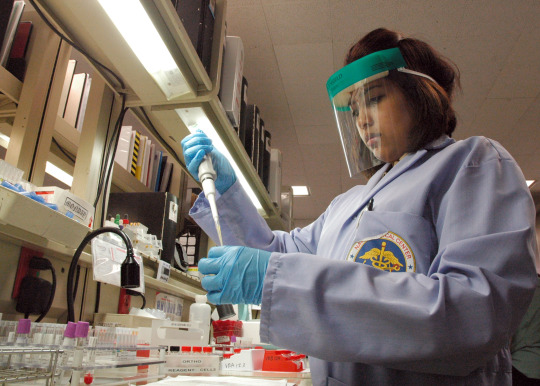
Mobile lab services are transforming healthcare. These services bring diagnostic and laboratory testing directly to your doorstep, eliminating the need for time-consuming trips to medical facilities. At MobileBloodDrawServices, we specialize in providing high-quality, reliable, and patient-centered mobile lab services. This innovative approach ensures you receive the care you need with minimal disruption to your daily routine.

What Are Mobile Lab Services?
Mobile lab services involve professional healthcare providers performing diagnostic tests at a location convenient for the patient, such as their home or office. These services typically include:
Why Choose Mobile Lab Services?
The shift towards mobile healthcare is driven by the growing need for personalized and convenient care. Here are the top reasons to choose mobile lab services at MobileBloodDrawServices:
Convenience and Accessibility Traditional lab visits often involve long waits, scheduling conflicts, and travel. With MobileBloodDrawServices, lab technicians come to you, saving you time and effort.
Patient Comfort For individuals who experience anxiety in clinical settings, mobile lab services offer the comfort of staying in familiar surroundings during testing.
Time-Saving Solutions Busy schedules make it challenging to prioritize healthcare. MobileBloodDrawServices ensures you don’t need to compromise your time, providing quick and efficient services at your preferred location.
Ideal for Vulnerable Populations Elderly individuals, disabled patients, or those with chronic illnesses benefit immensely from mobile services, as they eliminate the challenges of transportation and accessibility.
Services Offered by MobileBloodDrawServices
At MobileBloodDrawServices, we provide a comprehensive range of diagnostic and laboratory services designed to meet diverse patient needs.
Blood Draw Services Our certified phlebotomists are skilled in collecting blood samples for routine and specialized tests. Whether it’s a one-time test or part of ongoing health monitoring, we ensure accuracy and comfort.
Specimen Collection We collect various samples, including urine, saliva, and stool, for diagnostic purposes. Our processes adhere to strict hygiene and safety protocols.
Diagnostic Screenings From cholesterol and glucose testing to vitamin deficiency panels, we offer a wide array of diagnostic screenings to support preventive care.
Health Monitoring For patients managing conditions like diabetes, heart disease, or kidney issues, our mobile lab services provide regular monitoring, ensuring proactive health management.
Why Choose MobileBloodDrawServices?
At MobileBloodDrawServices, we are committed to delivering exceptional care. Here’s what sets us apart:
Experienced Professionals Our team of certified phlebotomists and lab technicians is trained to provide accurate, efficient, and compassionate care.
Advanced Technology We use state-of-the-art equipment to ensure precision in every test, from sample collection to laboratory analysis.
Flexible Scheduling We understand that everyone’s schedule is different. MobileBloodDrawServices offers appointments during evenings and weekends to accommodate your needs.
Transparent Pricing Our services are designed to be affordable, with no hidden fees. You’ll know exactly what to expect before your appointment.
Stringent Hygiene Standards We follow rigorous safety and hygiene protocols to protect patients and staff, ensuring a safe and clean testing environment.
Frequently Asked Questions (FAQs)
Is mobile lab testing accurate? Yes. MobileBloodDrawServices uses the same certified laboratories and advanced equipment as traditional facilities, ensuring accurate and reliable results.
How do I book a service? Simply visit our website or call our customer support team to schedule an appointment at your convenience.
What areas do you serve? We provide services across [specific service regions], including urban and suburban locations.
Are mobile lab services covered by insurance? Many insurance providers cover mobile lab services. Contact us to discuss your insurance plan and payment options.
Mobile lab services offered by MobileBloodDrawServices are revolutionizing the way patients access diagnostic testing. Combining convenience, comfort, and accuracy, these services cater to diverse needs while prioritizing patient care. Whether you’re managing a chronic illness, juggling a busy schedule, or seeking preventive screenings, MobileBloodDrawServices ensures a seamless and stress-free healthcare experience.
Contact US Phone : 703-689-1585 Fax : 1-800-887-9017 Email : [email protected] or [email protected] Address : 3057 Nutley Street, Suite 193, Fairfax Va 22031, United States Website: http://www.mobileblooddrawservices.com/home/
#Mobile Lab Services#mobileblooddrawservices#Mobile blood draw services#Stat blood draw#Blood draw at home services near me#Mobile blood tests
2 notes
·
View notes
Text

Creating a Space Station
Name and Location:
Name of the space station
Orbital location (e.g., around a planet, moon, or in deep space)
Any unique features or characteristics of the location
Background and Purpose:
Brief history and reasons for the station's construction
Primary purpose or mission of the station (e.g., research, colonization, defense, trade, mining, etc.)
Key organizations or entities involved in its establishment
Design and Structure:
Overview of the station's architectural design and layout
Different modules or sections of the station (e.g., living quarters, research labs, docking bays, etc.)
Key engineering feats or technological advancements used in its construction
Size and Population:
Dimensions of the space station (length, width, height)
Estimated population and demographics (humans, aliens, robots, etc.)
Capacity for expansion and accommodating future growth
Systems and Resources:
Life support and Resource systems: Air generation and filtration, Water purification and recycling, Waste management, Artificial gravity, Temperature and air pressure control, Radiation protection, Fire suppression systems, Medical supplies and tools, Food production, Maintenance and Repair tools and facilities
Energy source and storage: Solar power, Nuclear fusion, Advanced batteries, Fusion reactors, Harvesting solar flares
Living Quarters and Facilities
Description of residential areas (individual quarters, communal spaces, recreational facilities)
Water block
Medical facilities and healthcare services available
Education and training facilities for residents and their families
Scientific Research and Laboratories
Different types of laboratories and equipment available depending on the stations’s mission
Astronomical observatories, Biological Laboratory, Climate and Environmental Studies, Planet observation and Research, Rock Analysis Facility
Transportation and Docking:
Docking bays for spacecraft and shuttle services
Transportation systems within the station (elevators, maglev trains, etc.)
Maintenance and repair facilities for visiting spacecraft
Security and Defense:
Security measures and protocols
Defense systems against potential threats: Shielding technology, Defensive satellites & space drones, Cloaking Technology, Countermeasures (flares, countershots, etc), Intruder Detection Systems, Surveillance and AI protection, Protection by AI or Hacker from outside hacks, Self-Repair System
Security personnel and their roles and ranks
Communication and Information Systems:
Communication technology used for inter-station and interstellar communication
Data storage and retrieval systems
Access to networks anddatabases
Trade and Economy:
Types of goods and resources traded on the station
Cargo of the space station
Economic systems
Currency used
Marketplaces within the station
Social and Cultural Aspects:
Societal norms and cultural diversity among the station's residents
Recreational and entertainment facilities (cinemas, sports arenas, etc.)
Events or celebrations unique to the station's culture
Governance and Administration:
Station hierarchy and governing bodies (administrators, council, etc.)
Laws and regulations specific to the station
Interactions with external governing entities (planetary governments, interstellar alliances, etc.)
Exploration and Discovery:
Expeditions or missions launched from the station
Discoveries made during exploration and sample gathering efforts
Spacecrafts and vehicles associated with the station's exploration activities
Environmental Considerations:
Measures taken to mitigate the effects of microgravity or radiation on residents' health
Environmental controls and simulations for recreating gravity and natural environments
Preservation of ecosystems and biodiversity on the station (if applicable)
Emergency Response and Crisis Management:
Protocols for handling emergencies (fires, system failures, medical emergencies, etc.)
Emergency evacuation plans and escape pods
Training programs for emergency response teams
Relations with Other Space Stations or Entities:
Collaborative projects or joint initiatives with other space stations
Trade agreements or diplomatic relations with neighboring stations or colonies
Conflict resolution mechanisms for inter-station disputes
Notable Individuals or Figures:
Prominent leaders from the station
Accomplishments and contributions of notable residents
Astronauts, scientists, or pioneers who have called the station home
Challenges and Risks:
Environmental and technological risks faced by the station
Political and social tensions within the station's community
External threats and conflicts affecting the station's stability
Future Expansion and Development:
Plans for future expansion and upgrades (where are they gonna get the resources for this?)
Integration of new technologies, scientific advancements into the station's infrastructure
Long-term goals for the station
32 notes
·
View notes
Text
Dubai's Smart City strategy
Dubai's Smart City Strategy is an ambitious initiative aimed at transforming the city into a global leader in technology, innovation, and sustainability. Launched by the Dubai government, this comprehensive strategy leverages digital technologies and data-driven insights to improve the lives of residents, enhance government services, and foster economic growth.
Key Pillars of Dubai's Smart City Strategy
Digital Transformation: At the core of the strategy is the digitization of government services. This includes providing online access to public services, streamlining administrative processes, and implementing paperless transactions. The goal is to create a seamless and efficient experience for residents and businesses when interacting with the government.
Data-Driven Decision Making: Dubai's Smart City strategy emphasizes the collection and analysis of data to inform decision-making and improve city management. This includes using sensors and IoT devices to gather data on traffic flow, energy consumption, and environmental conditions. By analyzing this data, the city can optimize resource allocation, improve infrastructure planning, and enhance public safety.
Technological Innovation: Dubai is actively promoting the development and adoption of cutting-edge technologies, such as artificial intelligence, blockchain, and cloud computing. This includes supporting research and development initiatives, fostering partnerships with technology companies, and creating a regulatory environment that encourages innovation.
Sustainability: A key focus of the strategy is to create a sustainable and environmentally friendly city. This includes initiatives to promote energy efficiency, reduce carbon emissions, and encourage the use of renewable energy sources. Dubai is also investing in green infrastructure, such as parks and green spaces, to improve the quality of life for residents.
Citizen Engagement: The Smart City strategy emphasizes the importance of citizen engagement and participation. This includes creating platforms for residents to provide feedback, share ideas, and contribute to the development of the city. The goal is to create a sense of community ownership and ensure that the Smart City initiatives align with the needs and aspirations of the people.
Key Initiatives and Achievements
Happiness Meter: Dubai has implemented a "Happiness Meter" to gauge citizen satisfaction with public services and city initiatives. This real-time feedback system helps the government identify areas for improvement and prioritize projects that enhance the well-being of residents.
Paperless Strategy: Dubai has launched a "Paperless Strategy" aimed at eliminating paper transactions in government offices. This initiative has significantly reduced paper consumption, streamlined administrative processes, and improved efficiency.
Smart Mobility: Dubai is investing in smart mobility solutions, such as autonomous vehicles, smart traffic management systems, and integrated public transportation networks. These initiatives aim to reduce traffic congestion, improve road safety, and enhance the overall transportation experience.
Blockchain Strategy: Dubai is exploring the use of blockchain technology to enhance security, transparency, and efficiency in various sectors, including government services, logistics, and healthcare.
AI Lab: Dubai has established an AI Lab to develop and deploy artificial intelligence solutions for city management. This includes initiatives such as using AI to optimize traffic flow, improve public safety, and enhance the efficiency of government services.
Impact and Future Outlook
Dubai's Smart City strategy has already made significant progress in transforming the city into a technologically advanced and sustainable urban center. The initiatives have improved the efficiency of government services, enhanced the quality of life for residents, and attracted investment and innovation.
In the future, Dubai aims to further leverage technology to create a city that is not only smart but also resilient, inclusive, and human-centered. The focus will be on using technology to address challenges such as climate change, social inequality, and economic diversification. By continuing to invest in innovation and prioritize the needs of its citizens, Dubai is poised to become a global model for smart city development.
#Dubai's Smart City strategy#Dubai's Smart City#dubai#dubailife#dubairealestate#abu dhabi#services#uaebusiness#startup#business#dubaivape#jobs in dubai
2 notes
·
View notes
Text
Zip Code 56303: A Comprehensive Guide
Zip code 56303 is a unique geographic identifier assigned to a specific area within the United States. It serves as a crucial element for mail delivery, demographic analysis, and various location-based services. This article delves into the details of zip code 56303, exploring its location, demographics, housing, education, transportation, economy, healthcare, and points of interest. https://sihasah.com/zip-code-56303-a-comprehensive-guide/
3 notes
·
View notes
Text
Why Has the Left Deprioritized COVID?
“Left failures to incorporate an analysis of disability and ableism are detrimental to our vision and organizing capacity. Capitalism itself is fundamentally ableist, awarding the food and shelter necessary for survival on the basis of an individual’s ability to work for pay. Capitalism ensures its own survival by turning disabled people unable to work, along with other unemployed people, into a surplus population whose existence disciplines employed workers into accepting poor working conditions and little pay, lest they fall into the abject poverty and exclusion experienced by many disabled and unemployed people. Work under capitalism is a disabling process, as workers become debilitated through unsafe jobsites, injuries from accidents or repetitive stress, and the mental and psychological tolls of a work culture that is almost universally unsustainable …
“In 1970, the Young Lords, an organization that fought for self-determination for Puerto Ricans and all colonized people, occupied Lincoln Hospital in the South Bronx to demand better healthcare. In 1977, disability rights activists occupied a federal building in San Francisco for 26 days, demanding the right to access any service that receives federal funding: hospitals, universities, schools, public transportation, government buildings, libraries, and more. That sit-in wouldn’t have succeeded without the support of the Black Panther Party, Gay Men’s Butterfly Brigade, and United Farm Workers, who provided the occupation with food, security, and personal attendant care. These groups understood that their members had a stake in disability rights, whether or not they were disabled themselves.
“The left needs to unite against pandemic ableism, not out of goodwill or charity towards disabled leftists, but for our movement’s survival. Organizations limit their potential membership when they romanticize pre-pandemic organizing practices, where everything happened in person and those who couldn’t attend due to disability or illness, lack of transportation, a work conflict, or family caregiving duties simply couldn’t participate. When unions fail to understand – or act on the understanding – that scarce, poverty-level disability benefits and the end of pandemic unemployment supports are political attacks on all workers, whose exploitation happens in relation to the parallel misery of unemployment, they miss an important opportunity to help build power for the working class as a whole …
“We need to organize collective action that builds bridges between our individual workplaces, issues, or identities. We need to work together as teachers, nurses, school staff, retail workers, seniors, and disabled people whose lives are increasingly dangerous and isolated, to shut down production and consumption to demand a public health response that puts life over profit. To get there, we need to call the pandemic what it is: an exercise in eugenics, a mass disabling event, and an escalation of racialized class warfare. The left’s job is not to accept the narrative of events that corporate media and government officials give us – ‘the pandemic’s over’ – but to craft our own, showing each other how many more people could be kept alive with policies such as universal free healthcare and housing; abolition of prisons, borders, and nursing homes; and broad mask requirements, ventilation upgrades, and widespread, accessible testing. We don’t need to accept mass infection. To survive this pandemic and the next one, we need to recognize that we all have a stake in transforming this extractive system, and together we have the power to shut it down.”
#covid 19#covid#coronavirus#covid pandemic#pandemic#healthcare#disability#ableism#leftist movements#the left#workers rights#trade unions#mutual aid#organising#capitalism#racism#eugenics#american politics#politics
42 notes
·
View notes
Text
Largest global IT outage in history did not affect Russia
A global technology outage caused by a software update from US cybersecurity company Crowdstrike caused chaos around the world on Friday, with flights suspended and healthcare, banking and ground transport systems facing major disruptions.
George Kurtz, president and CEO of Crowdstrike, said Friday morning that the company is “actively working with customers affected by a flaw discovered in one content update for Windows hosts” – a glitch that affected Microsoft users around the world. He also added:
“This is not a security incident or cyberattack. The issue has been identified, isolated, and a fix has been deployed. We refer customers to the support portal for the latest updates and will continue to provide complete and continuous updates on our website. We further recommend organisations ensure they’re communicating with CrowdStrike representatives through official channels. Our team is fully mobilised to ensure the security and stability of CrowdStrike customers.”
The Financial Times explained that Crowdstrike is “one of the world’s largest providers of “endpoint” security software, used by companies to monitor for security problems across a huge range of devices, from desktop PCs to checkout payment terminals.”
Troy Hunt, a security consultant, wrote on social media that “this will be the largest IT outage in history.” He also added:
“This is basically what we were all worried about with Y2K, except it’s actually happened this time.”
The impacts of the outage cascaded rapidly. Wired noted that “in the early hours of Friday, companies in Australia running Microsoft’s Windows operating system started reporting devices showing Blue Screens of Death (BSODs).” It continued:
“Shortly after, reports of disruptions started flooding in from around the world, including from the UK, India, Germany, the Netherlands, and the US: TV station Sky News went offline, and US airlines United, Delta, and American Airlines issued a “global ground stop” on all flights.”
The UK has been hit by a glitch
As The New York Times observed, the National Health Service in the United Kingdom “was crippled throughout the morning on Friday, as a number of hospitals and doctors offices lost access to their computer systems.”
Whitehall crisis officials were coordinating the response through the Cobra committee that deals with matters of national emergency or major disruption. Ministers were in touch with their sectors to tackle the fallout from the IT failure, and the transport secretary, Louise Haigh, said she was working “at pace with industry” after trains and flights were affected, The Guardian reported.
In the US, flights were grounded owing to communications problems that appear to be linked to the outage. American Airlines, Delta and United Airlines were among the carriers affected. Berlin airport temporarily halted all flights on Friday, while in Australia, Melbourne airport advised customers it was “experiencing a global technology issue which is impacting check-in procedures for some airlines.”
Global flight cancellations
There had been more than 1,000 flight cancellations worldwide so far due to the IT failure, according to the aviation analysis firm Cirium.
Long lines formed at airports in Asia as airlines lost access to check-in and booking services at a time when many travelers are heading away on summer vacations. News outlets in Australia — where telecommunications were severely affected — were pushed off air for hours. Hospitals and doctor’s offices had problems with their appointment systems, while banks in South Africa and New Zealand reported outages to their payment system or websites and apps.
At Hong Kong’s airport, Yvonne Lee, 24, said she only found out her flight to Phuket in Thailand was postponed to Saturday when she arrived at the airport, saying the way it was handled would “affect the image of Hong Kong’s airport very much.” Her already short five-day trip would now have to be further shortened, she said.
In India, Hong Kong and Thailand, many airlines were forced to manually check in passengers. An airline in Kenya was also reporting disruption.
Some athletes and spectators descending on Paris ahead of the Olympics were delayed as was the arrival of their uniforms and accreditations, but Games organisers said disruptions were limited and didn’t affect ticketing or the torch relay.
In Germany, Berlin-Brandenburg Airport halted flights for several hours due to difficulties in checking in passengers, while landings at Zurich airport were suspended and flights in Hungary, Italy and Turkey disrupted.
The Dutch carrier KLM said it had been “forced to suspend most” of its operations.
Amsterdam’s Schiphol Airport warned that the outage was having a “major impact on flights” to and from the busy European hub. The chaotic morning coincided with one of the busiest days of the year for Schiphol.
Israel said its hospitals and post office operations were disrupted.
In South Africa, at least one major bank said it was experiencing nationwide service disruptions as customers reported they were unable to make payments using their bank cards in stores. The New Zealand banks ASB and Kiwibank said their services were down as well.
Shipping was disrupted too: A major container hub in the Baltic port of Gdansk, Poland, the Baltic Hub, said it was battling problems resulting from the global system outage.
Russia was unaffected by the outage
Meanwhile, Russia was less affected by this outage, mainly due to sanctions, import substitution strategy and technological sovereignty.
The global IT failure of devices running the Windows 10 operating system did not affect the operation of Russian airports and airlines, with flights running as scheduled. There are no problems with the information systems of Russian Railways.
“Rosatom” reported that the systems of the concern “Rosenergoatom” work on “import-independent software,” so there are no problems in operation. The disruption in Microsoft’s work will not affect the operation of Russia’s energy system in any way, the agency said.
Read more HERE

#world news#news#world politics#global politics#global news#current events#current reality#microsoft#microsoft corp#technology#power outage#internet outage#crowdstrike#russia#russia news#russian news#europe#european news#european union#eu politics#eu news#india#india news#hong kong#airlines#airport#flightbooking#flying#plane#airplanes
2 notes
·
View notes
Text
Expert Advice on Buying Your First Home in Dubai
Buying your first home in Dubai is an exciting milestone, but it can also be a complex process. This blog provides expert advice to help you navigate the journey of buying your first home in Dubai successfully.
For more information on home loans, visit home loan dubai.
Defining Your Budget
Assess Your Finances: Start by assessing your current financial situation, including your income, savings, and existing debts. Determine how much you can afford to spend on a property without compromising your financial stability.
Mortgage Pre-Approval: Obtain a mortgage pre-approval to determine your budget and streamline the buying process. A pre-approval gives you a clear idea of your borrowing capacity and demonstrates to sellers that you are a serious and qualified buyer.
Down Payment and Additional Costs: Ensure you have sufficient funds for the down payment, typically 20-25% of the property's value for expatriates. Consider additional costs such as registration fees, agent commissions, maintenance charges, and moving expenses.
For property purchase options, explore Buy Luxury Property in UAE.
Researching the Market
Market Trends: Stay informed about current market trends, including property prices, demand and supply dynamics, and future developments. Utilize online resources, real estate reports, and market analyses to stay updated.
Location Analysis: Analyze different neighborhoods in Dubai to identify areas that align with your lifestyle and investment goals. Consider factors such as proximity to schools, workplaces, and amenities.
Property Types: Familiarize yourself with the different types of residential properties available in Dubai, such as apartments, villas, townhouses, and penthouses. Each type has its own advantages and considerations.
For mortgage services, consider Dubai Mortgage Advisors.
Choosing the Right Property
Location: Choose a location that offers easy access to essential amenities such as schools, healthcare facilities, shopping malls, and public transportation. Popular residential areas in Dubai include Downtown Dubai, Dubai Marina, Palm Jumeirah, and Arabian Ranches.
Property Condition: Inspect the property for any structural issues, maintenance needs, and potential repairs. Hire a professional inspector if necessary to ensure the property is in good condition.
Developer Reputation: Research the reputation of the property developer. Established developers with a track record of delivering high-quality projects on time are usually a safer choice.
For rental property management, visit Apartments For Rent in Dubai.
Legal and Regulatory Considerations
Title Deed Verification: Ensure the property has a clear title and is free from any legal disputes or encumbrances. The DLD provides title deed verification services to help buyers confirm the property's legal status.
Sales Agreement: Review the sales agreement carefully and seek legal advice if needed. Ensure all terms and conditions are clearly outlined, including the price, payment schedule, and any additional costs.
Residency Visa: Property buyers in Dubai may be eligible for a residency visa. The visa duration and requirements vary depending on the property's value and the buyer's nationality. Consult with the DLD or a legal expert to understand the specific visa requirements and benefits.
For property sales, visit Sell Your Property.
The Buying Process
Property Search: Use online property portals and engage with reputable real estate agents to find suitable properties. Schedule viewings to inspect potential properties and assess their condition.
Making an Offer: When making an offer, consider the current market conditions and the property's value. Be prepared to negotiate and make counteroffers if necessary. Your real estate agent can assist you in negotiating the best deal.
Finalizing the Purchase: Once the offer is accepted, both parties sign a Memorandum of Understanding (MOU) outlining the agreed terms. Pay the initial deposit (usually 10% of the property's value) and proceed with obtaining the necessary approvals from the DLD.
Real-Life Success Story
Consider the case of Emily, a first-time homebuyer who successfully purchased her first home in Dubai. Emily conducted thorough research, obtained mortgage pre-approval, and chose a reputable developer. By following the steps outlined in this guide, Emily secured a beautiful apartment in Dubai Marina and enjoys the vibrant lifestyle and amenities the area offers.
Future Trends in Dubai Real Estate
Sustainable Developments: There is a growing demand for eco-friendly and sustainable properties in Dubai. Developers are increasingly incorporating green building practices and energy-efficient features into their projects.
Smart Homes: The adoption of smart home technology is on the rise. Properties equipped with advanced security systems, automated lighting, and climate control are becoming more popular.
Mixed-Use Communities: Integrated communities that offer a mix of residential, commercial, and recreational facilities are gaining popularity. These developments provide residents with a convenient and holistic living experience.
Conclusion
Buying your first home in Dubai can be a rewarding experience with the right preparation and knowledge. By defining your budget, researching the market, choosing the right property, and navigating legal considerations, you can make a successful investment. For more resources and expert advice, visit home loan dubai.
2 notes
·
View notes
Text
🤖 Artificial Intelligence (AI): What It Is and How It Works
Artificial Intelligence (AI) is transforming the way we live, work, and interact with technology. Let's break down what AI is and how it works. 🌐
What Is AI?
AI refers to the simulation of human intelligence in machines designed to think and learn like humans. These intelligent systems can perform tasks that typically require human intelligence, such as recognizing speech, making decisions, and translating languages.
How AI Works:
Data Collection 📊 AI systems need data to learn and make decisions. This data can come from various sources, including text, images, audio, and video. The more data an AI system has, the better it can learn and perform.
Machine Learning Algorithms 🤖 AI relies on machine learning algorithms to process data and learn from it. These algorithms identify patterns and relationships within the data, allowing the AI system to make predictions or decisions.
Training and Testing 📚 AI models are trained using large datasets to recognize patterns and make accurate predictions. After training, these models are tested with new data to ensure they perform correctly.
Neural Networks 🧠 Neural networks are a key component of AI, modeled after the human brain. They consist of layers of interconnected nodes (neurons) that process information. Deep learning, a subset of machine learning, uses neural networks with many layers (deep neural networks) to analyze complex data.
Natural Language Processing (NLP) 🗣 NLP enables AI to understand and interact with human language. It’s used in applications like chatbots, language translation, and sentiment analysis.
Computer Vision 👀 Computer vision allows AI to interpret and understand visual information from the world, such as recognizing objects in images and videos.
Decision Making and Automation 🧩 AI systems use the insights gained from data analysis to make decisions and automate tasks. This capability is used in various industries, from healthcare to finance, to improve efficiency and accuracy.
Applications of AI:
Healthcare 🏥: AI aids in diagnosing diseases, personalizing treatment plans, and predicting patient outcomes.
Finance 💰: AI enhances fraud detection, automates trading, and improves customer service.
Retail 🛍: AI powers recommendation systems, optimizes inventory management, and personalizes shopping experiences.
Transportation 🚗: AI drives advancements in autonomous vehicles, route optimization, and traffic management.
AI is revolutionizing multiple sectors by enhancing efficiency, accuracy, and decision-making. As AI technology continues to evolve, its impact on our daily lives will only grow, opening up new possibilities and transforming industries.
Stay ahead of the curve with the latest AI insights and trends! 🚀 #ArtificialIntelligence #MachineLearning #Technology #Innovation #AI
3 notes
·
View notes
Text
EXPLANATION OF DATA SCIENCE
Data science
In today's data-driven world, the term "data science" has become quite the buzzword. At its core, data science is all about turning raw data into valuable insights. It's the art of collecting, analyzing, and interpreting data to make informed decisions. Think of data as the ingredients, and data scientists as the chefs who whip up delicious insights from them.

The Data Science Process
Data Collection: The journey begins with collecting data from various sources. This can include anything from customer surveys and social media posts to temperature readings and financial transactions.
Data Cleaning: Raw data is often messy and filled with errors and inconsistencies. Data scientists clean, preprocess, and organize the data to ensure it's accurate and ready for analysis.
Data Analysis: Here's where the real magic happens. Data scientists use statistical techniques and machine learning algorithms to uncover patterns, trends, and correlations in the data. This step is like searching for hidden gems in a vast treasure chest of information.
Data Visualization: Once the insights are extracted, they need to be presented in a way that's easy to understand. Data scientists create visualizations like charts and graphs to communicate their findings effectively.
Decision Making: The insights obtained from data analysis empower businesses and individuals to make informed decisions. For example, a retailer might use data science to optimize their product inventory based on customer preferences.

Applications of Data Science
Data science has a wide range of applications in various industries.
Business: Companies use data science to improve customer experiences, make marketing strategies more effective, and enhance operational efficiency.
Healthcare: Data science helps in diagnosing diseases, predicting patient outcomes, and even drug discovery.
Finance: In the financial sector, data science plays a crucial role in fraud detection, risk assessment, and stock market predictions.
Transportation: Transportation companies use data science for route optimization, predicting maintenance needs, and even developing autonomous vehicles.
Entertainment: Streaming platforms like Netflix use data science to recommend movies and TV shows based on your preferences.
Why Data Science Matters
Data science matters for several reasons:
Informed Decision-Making: It enables individuals and organizations to make decisions based on evidence rather than guesswork.
Innovation: Data science drives innovation by uncovering new insights and opportunities.
Efficiency: Businesses can streamline their operations and reduce costs through data-driven optimizations.
Personalization: It leads to personalized experiences for consumers, whether in the form of product recommendations or targeted advertisements.
In a nutshell, data science is the process of turning data into actionable insights. It's the backbone of modern decision-making, fueling innovation and efficiency across various industries. So, the next time you hear the term "data science," you'll know that it's not just a buzzword but a powerful tool that helps shape our data-driven world.
Overall, data science is a highly rewarding career that can lead to many opportunities. If you're interested in this field and have the right skills, you should definitely consider it as a career option. If you want to gain knowledge in data science, then you should contact ACTE Technologies. They offer certifications and job placement opportunities. Experienced teachers can help you learn better. You can find these services both online and offline. Take things step by step and consider enrolling in a course if you’re interested.
Thanks for reading.
2 notes
·
View notes
Text
"Unveiling the Future: How Data Science is Revolutionizing Upcoming Industries"
Data science continues to have a substantial impact on various industries, and its scope is expected to expand as new technologies emerge and businesses realize the potential of data-driven insights. Here are some upcoming industries where data science is likely to play a significant role:
Healthcare and Life Sciences: Data science can aid in personalized medicine, drug discovery, predictive analytics for patient outcomes, and healthcare operations optimization.
Financial Services: Financial institutions use data science for fraud detection, risk assessment, algorithmic trading, customer behavior analysis, and credit scoring.
Retail and E-Commerce: Data science helps optimize inventory management, pricing strategies, recommendation systems, and customer segmentation for targeted marketing.
Energy and Utilities: The energy sector benefits from data analytics for smart grid management, predictive maintenance of equipment, and energy consumption optimization.
Manufacturing: Data science improves manufacturing processes through predictive maintenance, quality control, supply chain optimization, and demand forecasting.
Agriculture: Precision agriculture utilizes data science to optimize crop yield, resource allocation, pest control, and environmental monitoring.
Transportation and Logistics: Data science plays a role in route optimization, fleet management, demand forecasting, and autonomous vehicles.
Telecommunications: Data science assists in customer churn prediction, network optimization, and personalized service offerings.
Media and Entertainment: Content recommendation, audience segmentation, and analyzing viewer engagement are areas where data science is making an impact.
Real Estate: Data science helps in property price prediction, market trend analysis, and investment decision-making.
Environmental Conservation: Data science aids in monitoring and analyzing environmental data, including climate patterns, pollution levels, and habitat preservation.
Education: Data science can personalize learning experiences, assess student performance, and optimize educational resources.
Government and Public Services: Data-driven decision-making is becoming increasingly important for optimizing public services, policy formulation, and resource allocation.
Insurance: Insurers use data science for risk assessment, claims processing, fraud detection, and customized pricing.
Travel and Tourism: Data science enhances traveler experiences through personalized recommendations, pricing optimization, and destination insights.
Pharmaceuticals: Data science plays a role in drug discovery, clinical trials optimization, and pharmacovigilance.
Smart Cities: The concept of smart cities involves integrating data science for efficient urban planning, traffic management, energy consumption, and public services.
Cybersecurity: Data science helps in identifying and responding to cyber threats by analyzing patterns and anomalies in network data.
As technology continues to advance and businesses recognize the value of data-driven insights, certybox is creating a difference in providing the top professional courses along with job assistance. It's essential for professionals in the field to stay updated with the latest developments and tools to make the most of these opportunities.
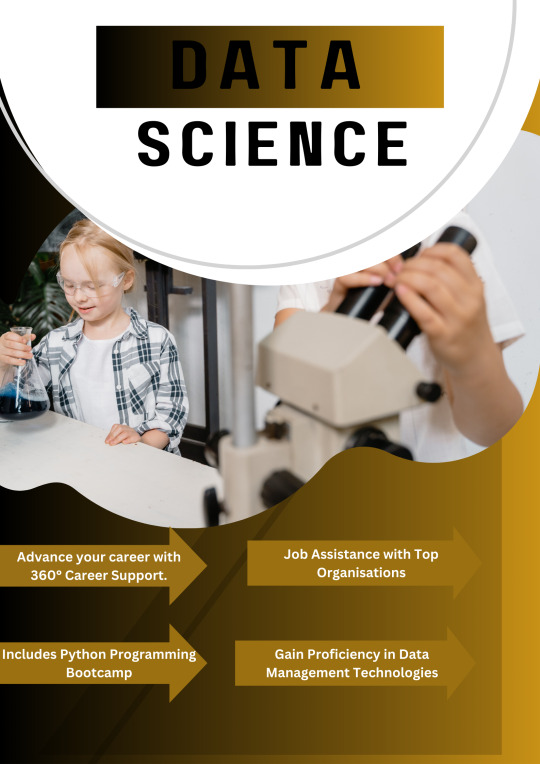
5 notes
·
View notes
Text
The Power of Software Development: Transforming Ideas into Reality
Introduction: Software development is the driving force behind technological innovation in our digital age. From mobile applications to enterprise systems, software development has the power to transform ideas into functional and impactful solutions. In this short blog, we will explore the significance of software development and its ability to shape our modern world.
Solving Real-World Problems: Software development enables us to address real-world challenges and improve efficiency across various industries. For instance, in the healthcare sector, software solutions have revolutionized patient management systems, electronic health records, and telemedicine platforms, enhancing the quality and accessibility of healthcare services. Similarly, in the transportation industry, software plays a crucial role in logistics optimization, route planning, and driver management, leading to cost savings and improved delivery times.
Enhancing User Experiences: Well-designed software applications can significantly enhance user experiences. Whether it's a user-friendly mobile app or a sleek web interface, software developers strive to create intuitive and engaging experiences for users. By leveraging user-centered design principles and incorporating feedback from usability testing, software developers can create interfaces that are visually appealing, easy to navigate, and seamlessly integrate with users' daily lives.
Empowering Businesses: Software development empowers businesses by providing them with custom solutions tailored to their specific needs. From customer relationship management (CRM) systems to inventory management software, businesses can leverage software to streamline operations, automate repetitive tasks, and gain valuable insights from data analysis. This allows organizations to make informed decisions, improve productivity, and stay ahead in a competitive market.
Enabling Innovation: Software development is at the forefront of innovation, constantly pushing the boundaries of what is possible. Through advancements in artificial intelligence (AI), machine learning, and data analytics, software developers have the tools to develop intelligent systems that can automate processes, make predictions, and provide personalized recommendations. These innovations have led to breakthroughs in fields like healthcare diagnostics, autonomous vehicles, and personalized marketing strategies.
Collaboration and Open Source: Collaboration is a key aspect of software development. The open-source movement has fostered a culture of sharing and collaboration, allowing developers worldwide to contribute to projects, share code, and build upon existing solutions. This collaborative nature of software development encourages knowledge sharing and helps accelerate innovation.
Continuous Improvement: Software development is a dynamic field that embraces continuous improvement. Developers are constantly refining their skills, adopting new technologies, and staying up to date with industry trends. This dedication to continuous learning and improvement ensures that software solutions are efficient, secure, and capable of adapting to changing user needs.
Conclusion: Software development is a powerful tool that shapes our modern world, enabling us to solve problems, enhance user experiences, empower businesses, and drive innovation. From healthcare to transportation, education to entertainment, software development is at the core of technological advancements across industries. As technology continues to evolve, software developers will play a pivotal role in creating the software solutions that will shape our future.
#software#developer#software developer#software development#web devlopment#e commerce development#development#seo company
2 notes
·
View notes
Text
Global AI Accelerator Chip Market Expected to Grow Substantially Owing to Healthcare Industry

Global AI Accelerator Chip Market Expected to Grow Substantially Owing to Increased Use of AI Accelerator Chips in Healthcare Industry. The global AI accelerator chip market is expected to grow primarily due to its growing use in the healthcare industry. The cloud sub-segment is expected to flourish immensely. The market in the North American region is predicted to grow with a high CAGR by 2031. NEW YORK, March 17, 2023 - As per the report published by Research Dive, the global AI accelerator chip market is expected to register a revenue of $332,142.7 million by 2031 with a CAGR of 39.3% during the 2022-2031 period.
Dynamics of the Global AI Accelerator Chip Market
Growing use of AI accelerator chips across the global healthcare industry is expected to become the primary growth driver of the AI accelerator chip market in the forecast period. Additionally, the rise of the cyber safety business is predicted to propel the market forward. However, according to market analysts, lack of skilled AI accelerator chip workforce might become a restraint in the growth of the market. The growing use of AI accelerator chip semiconductors is predicted to offer numerous growth opportunities to the market in the forecast period. Moreover, the increased use of AI accelerator chips to execute AI workloads such as neural networks is expected to propel the AI accelerator chip market forward in the coming period.
COVID-19 Impact on the Global AI Accelerator Chip Market
The Covid-19 pandemic disrupted the routine lifestyle of people across the globe and the subsequent lockdowns adversely impacted the industrial processes across all sectors. The AI accelerator chip market, too, was negatively impacted due to the pandemic. The disruptions in global supply chains due to the pandemic resulted in a decline in the semiconductor manufacturing industry. Also, the travel restrictions put in place by various governments reduced the availability of skilled workforce. These factors brought down the growth rate of the market.
Key Players of the Global AI Accelerator Chip Market
The major players in the market include: - NVIDIA Corporation - Micron Technology Inc. - NXP Semiconductors N.V. - Intel Corporation - Microsoft Corporation - Advanced Micro Devices Inc. (AMD) - Qualcomm Technologies Inc. - Alphabet Inc. (Google Inc.) - Graphcore Limited. - International Business Machines Corporation These players are working on developing strategies such as product development, merger and acquisition, partnerships, and collaborations to sustain market growth. For instance, in May 2022, Intel Habana, a subsidiary of Intel, announced the launch of 2nd generation AI chips which according to the company, will provide a 2X performance advantage over the previous generation NVIDIA A100. This product launch will help Intel Habana to capitalize on this rather nascent market and will consolidate its lead over the competitors further.
What the Report Covers:
Apart from the information summarized in this press release, the final report covers crucial aspects of the market including SWOT analysis, market overview, Porter's five forces analysis, market dynamics, segmentation (key market trends, forecast analysis, and regional analysis), and company profiles (company overview, operating business segments, product portfolio, financial performance, and latest strategic moves and developments.)
Segments of the AI Accelerator Chip Market
The report has divided the AI accelerator chip market into the following segments: Chip Type: Graphics Processing Unit (GPU), Application-Specific Integrated Circuit (ASIC), Field Programmable Gate Arrays (FPGA), Central Processing Unit (CPU), and others Processing Type: edge and cloud Application: Natural Language Processing (NLP), computer vision, robotics, and network security Industry Vertical: financial services, automotive and transportation, healthcare, retail, telecom, and others Region: North America, Europe, Asia-Pacific, and LAMEA SegmentSub-SegmentChip TypeCentral Processing Unit (CPU) – Most dominant market share in 2021 - The use of CPU for improving the performance of a computer while running graphics and video editors are expected to push the growth of this sub-segment further.Processing TypeCloud – Significant revenue growth in 2021 Cloud acceleration chip helps content creators, publishers, and other entities to offer material to end users promptly which is predicted to propel the growth rate of the market higher.ApplicationNatural Language Processing (NLP) – Highest market share in 2021 Increased use of Natural Language Processing (NLP) due to its ability to make computer-human interactions more natural is expected to propel the sub-segment forward.Industry VerticalHealthcare– Huge market revenue in 2021 The growing use of AI by major healthcare companies to complement medical imaging is anticipated to offer numerous growth opportunities to the sub-segment in the forecast period.RegionNorth America – Most profitable by 2031 The development of new technologies in artificial intelligence (AI) accelerators in this region is predicted to propel the market in the forecast period. Read the full article
3 notes
·
View notes